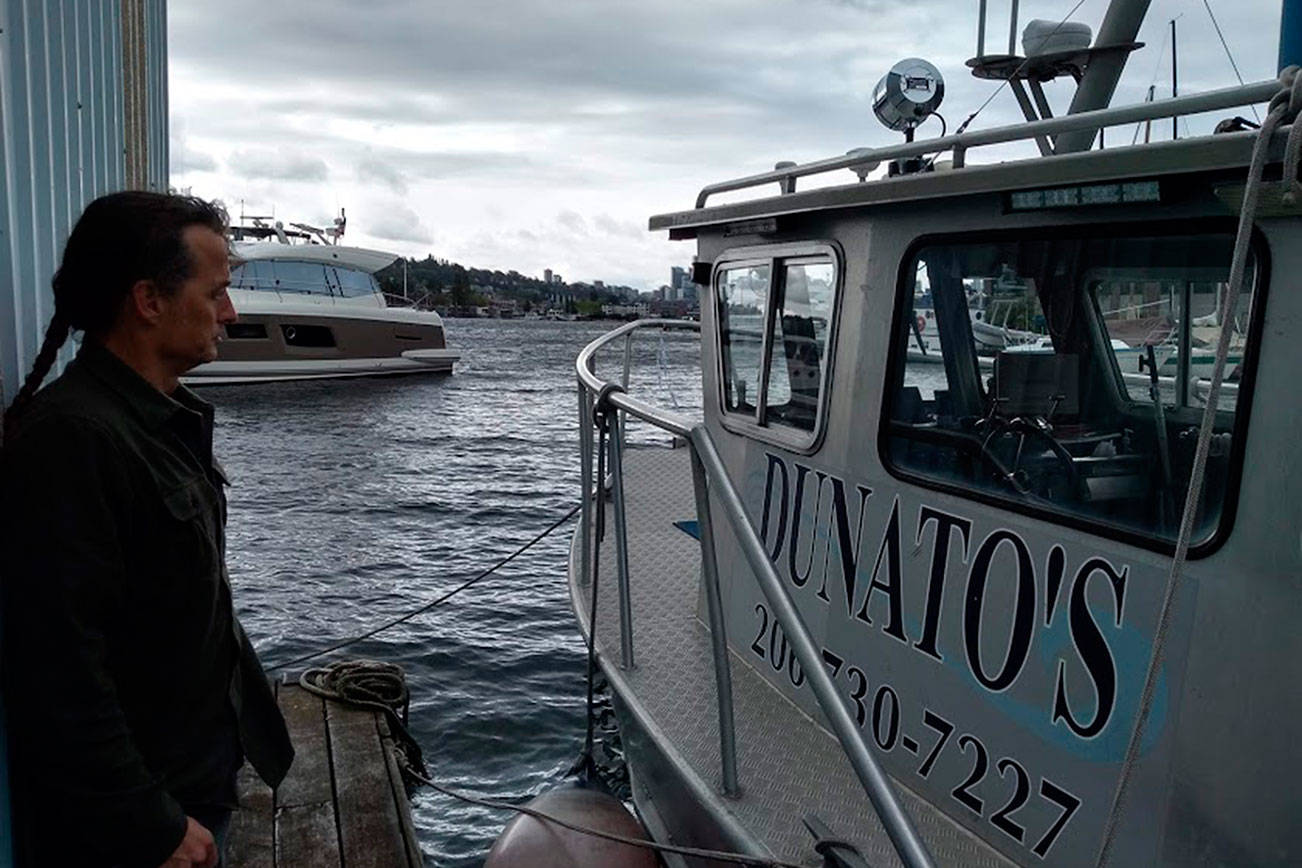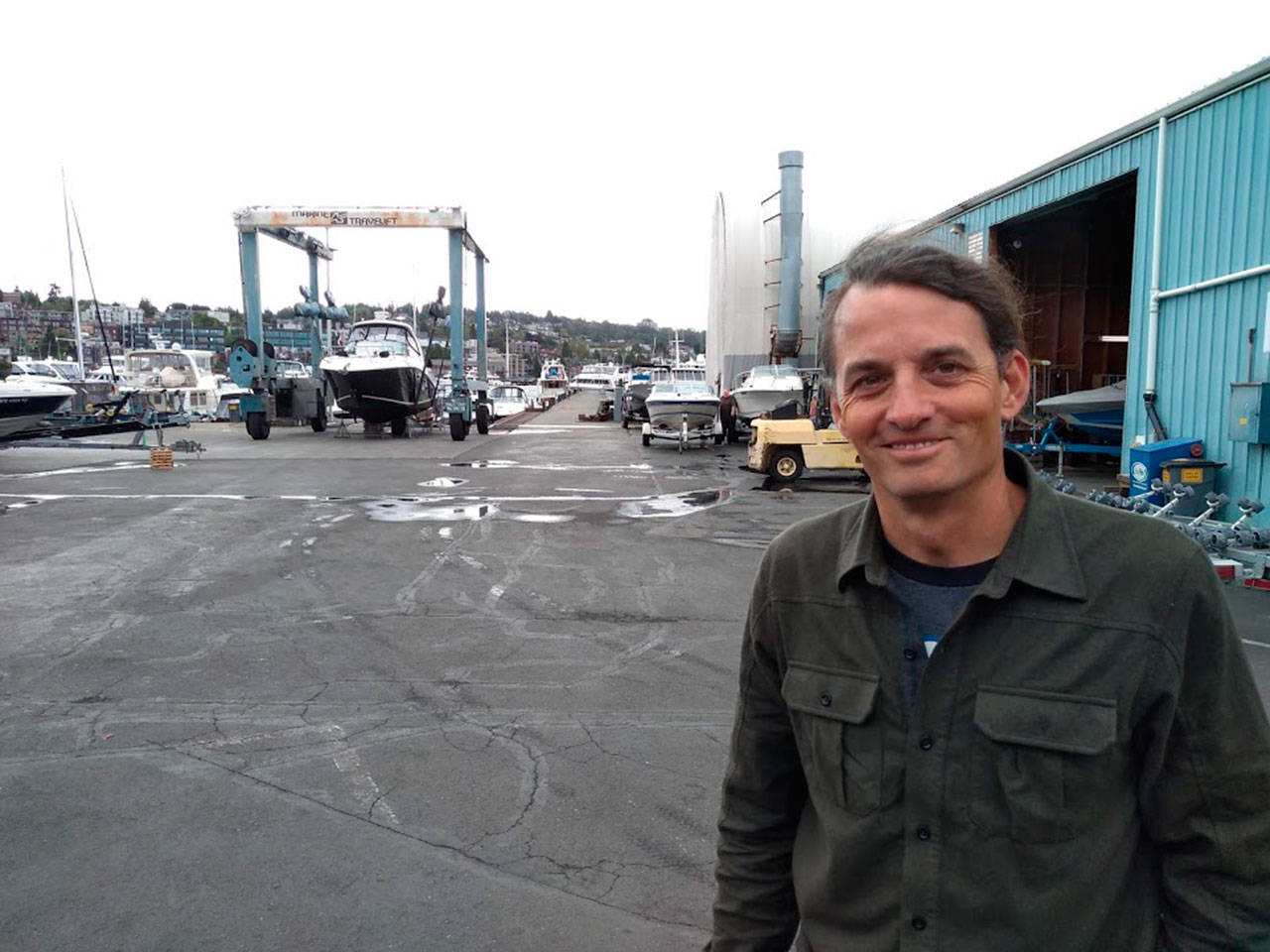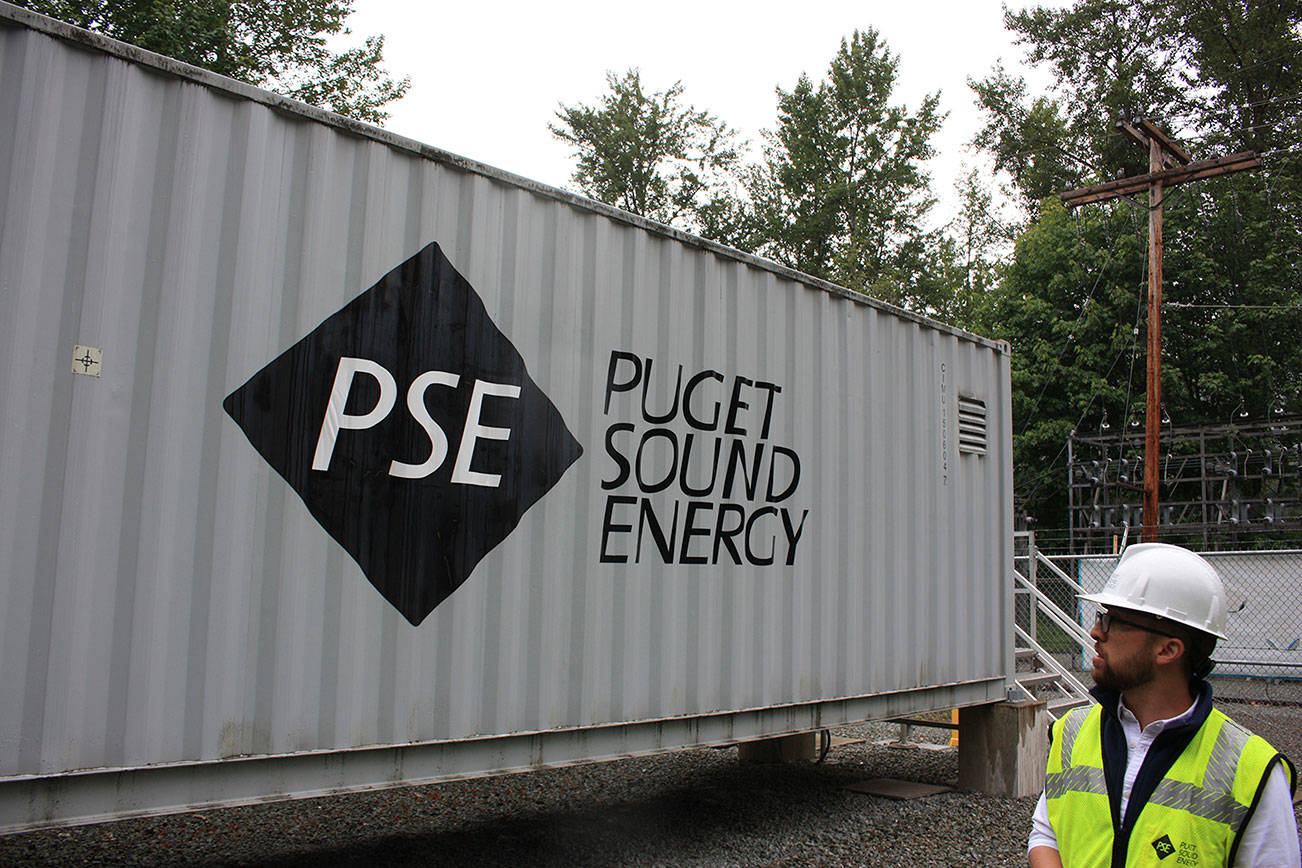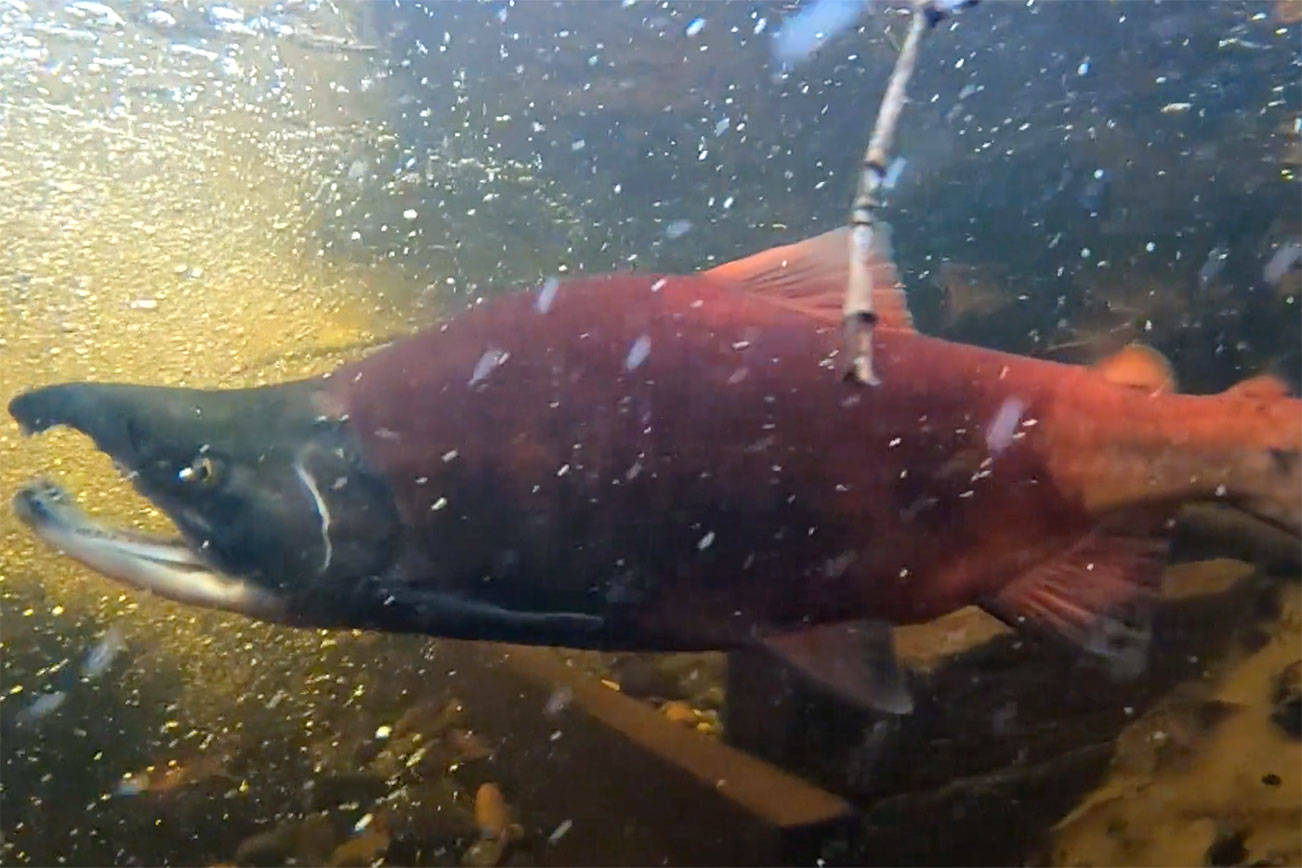The waters of Puget Sound and its surrounding lakes are symbols of the Pacific Northwest, and it’s hard to mention the region without conjuring images of breaching orcas or sailboats framed by the Olympics.
But maintaining these iconic waterways, from the Sound itself to Lake Washington and the Ballard Locks, takes a lot of effort. Thousands of commercial and recreational vessels ranging in size from small sailboats to freighters share the waves, and sometimes these ships end up on the wrong side of them.
As vessels age, they become prone to falling into disrepair and sinking, often through owner neglect or absence. Decommissioning a boat isn’t an expense people often consider when buying a vessel, said Corey Breuer, owner of Northwest Boat Disposal.
Junk boats, like most every other consumer product at the end of its useful life, typically end up in a local landfill and can cost owners thousands of dollars. The going rate for Breuer is around $130 a ton, which adds up quickly for larger boats that weigh upwards of 25 tons. On top of this, there are no wood or fiberglass recycling programs in the area.
“I try to recycle all the metal and engines,” Breuer said. “But I’m still taking a large boat to the dump.”
On a recent overcast and windy morning, Breuer walked down a dock at Dunato’s Boat Yard in Seattle to one of soon-to-be three boats they use to dredge up sunken vessels. The largest of the three sits moored to the dock and comes equipped with pumps capable of hauling up boats that sink in Puget Sound. Another smaller boat is used primarily for Lake Washington and its canals, while inside a floating boathouse, an even smaller one is being constructed to be used on Lake Sammamish.
Breuer said he receives a call nearly every day from boat owners who are looking for assistance with an aging or derelict boat. There was a fiberglass boat boom in the 1970s, and wooden boats were produced before then. Many of these are now either in need of repairs or removal.
“They weren’t made to last forever, especially in the Northwest,” Breuer said.
Common stories come up over and over again when talking about derelict or sunken boats, he said. The first is original owners getting too old to properly maintain their vessel or passing it off to their family who forget, neglect or outright abandon it. The second is when the original owner decides it’s not worth it to repair a boat and either gives it away or sells it at a lucratively low price.
The new owner of the boat generally finds out the hard way that in order to dock at a marina, they need insurance, but to get insurance, they need to pass an inspection, and passing an inspection usually means thousands of dollars in repairs. That’s another reason the boat ends up abandoned until it is removed or sinks.
The Washington State Department of Natural Resources (DNR) runs a tracking and removal program for sunken and derelict boats. The state has jurisdiction over any area that is underwater, even at low tide, with local municipalities handling tidal lands. Troy Wood, the department’s Derelict Vessel Removal Program manager, said the department maintains a list of boats that are derelict or have sunk and assigns them a rating of one through five, with one being the highest.
The state doesn’t allocate enough money to remove every boat, so often times lower priority boats sit on or under the water while those in danger of sinking or leaking fuel, oil or other contaminants are dealt with first, Wood said. However, the department’s budget is nearly exhausted for this biennium, so most boats will remain where they are at least until this July when the new budget kicks in.
“We don’t have enough resources to remove all of them,” Wood said.
The cost for dealing with a derelict boat varies and is generally tied to the boat’s size and the complexity to remove it. Once a boat sinks, it gets much harder and more expensive to deal with, Wood said. The process generally involves sealing as much of the hull as possible, pumping out water while removing oils and fuel and putting inflatables beneath it. Boats can be removed for as little as $1,000 or for as much as $250,000.
The DNR is allowed to reimburse organizations up to 90 percent of the cost of removal, with the remaining 10 percent allowed to be covered by labor and equipment costs. The total cost of removals has topped more than $5 million in King County alone since the program was created in 2003, Wood said.
The number of derelict vessels the state tracks has also been increasing. Wood said when the 2017-19 biennium began, they had around 100 boats on the list, a number that has grown to 153 despite the state removing around 100 over the past two years.
Removing a vessel is a long process, so the state prefers to reach out to owners after receiving a report that a boat may be showing signs of negligence. These reports can come from anyone from citizens to law enforcement or government agencies. If the owner is contacted and does not respond, the state posts a 30-day notice before removal operations begin. Small removals can be done through direct hiring, but larger and more expensive operations require a bidding process.
Washington state took additional action in recent years by passing a transfer law stipulating that any vessel more than 65 feet in length and older than 40 years must have insurance and an inspection, with that information then being sent to the state.
Without this, the seller would be left with secondary liability, meaning if the new owner abandoned the boat and couldn’t be found, the previous owner would be on the hook for potential expenses related to removal. Since the law took effect in 2014, Wood said there have only been five instances of secondary liability in the state.
Other entities like the Port of Seattle help with removals in their jurisdiction. Mike DeSota, the Port’s marine division environmental compliance manager, said the Port tries to seek reimbursement from the DNR, but often times the funding isn’t there, so they take on the cost of removal. Usually the expenses are manageable, he said.
One of the issues facing the Port is a lack of facilities to store vessels before they are either scrapped or auctioned off. While the Port of Everett has a boatyard, Seattle’s must either leave vessels in the water or temporarily store them on Port property or elsewhere.
“We try and minimize and weigh the risk of leaving a vessel in the water or not,” DeSota said.
The Port of Seattle deals with around three to five derelict or sunken boats each year, with the majority being recreational and pleasure-craft boats with roughly the same number of sailboats and powered vessels. Typically, older wooden boats are the worst off, with wood plant rot and other maintenance issues piling up, DeSota said.
The state of the economy also tends to play a role in the number of boats that go derelict in the state. DeSota said it fluctuates, but when the economy tanks, people tend to put off maintenance, which then snowballs. Sometimes owners can’t afford to pilot their boats, so they don’t end up keeping tabs on their vessels at the marina. This is a phenomena also seen at the state level.
“When the economy takes a downturn, we see a larger increase of abandoned and derelict vessels,” Wood said.
Wood said in Portland, Oregon, boat owners are selling or giving away derelict vessels to unsheltered people who end up living in dangerous boats, a phenomena that he said may be beginning in King County.










